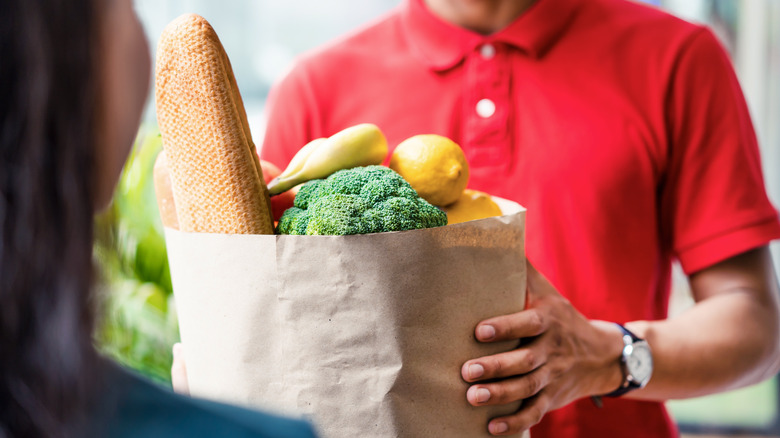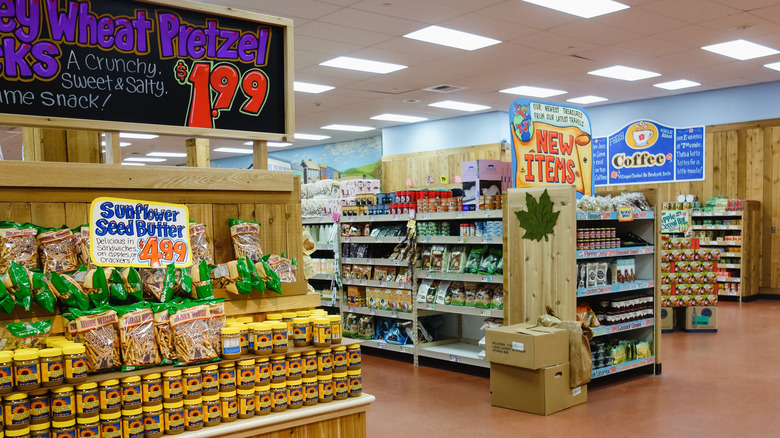Why Trader Joe's Is Unlikely To Offer Delivery Anytime Soon
"If it ain't broke, don't fix it." The old saying more or less sums up Trader Joe's longtime resistance to incorporating delivery and curbside pickup into its business model. According to CNN, the quirky grocery store isn't about to give shoppers a reason to bypass the in-store experience. Opened in 1967, the chain's first store, in Pasadena, California, was one of several convenience stores establishing a presence at the time. Joe Coulombe, the founder of Trader Joe's, intentionally incorporated the brand's tiki theme into the shopping experience to set his store apart from the competition (via The Daily Meal). You could say the store is their brand. Actually, that's exactly what they say.
In 2018, Jon Basalone, Trader Joe's president of stores, explained the philosophy during an episode of the "Inside Trader Joe's" podcast, "The store is our brand. People can't understand, 'Why aren't you selling products online? How come you don't just sell wholesale to China?'"
"It's like, well, because that's not what Trader Joe's is," he continued. "You know, for us the store is our brand and our products work the best when they're sold as part of this overall customer experience within the store."
Staying the course
Even during the pandemic, Trader Joe's held firm to its commitment to a brick-and-mortar-based brand identity. According to CNN, that decision was at least partially rooted in the fact that developing and introducing an e-commerce business model is costly. When the pandemic hit and other grocery stores were playing up and expanding their delivery and curbside pick-up platforms, Trader Joe's didn't have even the most basic infrastructure in place to support that kind of enterprise. In addition, some industry observers cite a touch of plain, old-fashioned resistance to change.
"Trader Joe's is skeptical of change," Benjamin Lorr, the author of "The Secret Life of Groceries," told CNN in 2022. "They have something that's working really well. The chain has been very slow to adapt from its core model and core competency." In addition, CNN speculates the product roll-over that drives Trader Joe's customers to shop like treasure hunters in search of new products and returning favorites would be difficult to replicate online.
Trader Joe's, on the other hand, cites its commitment to its employees as its primary reason for steering clear of delivery and automation, insisting those innovations don't always yield positive results. "The reality is that over the last couple of decades we've invested those resources in our people rather than build an infrastructure that eliminates the need for people," Matt Sloan, Trader Joe's vice president of marketing, said during an episode of the "Inside Trader Joe's" podcast.

